A new study on German third-graders learning spelling rules offers fresh evidence for one of the most counterintuitive findings in educational psychology: making practice harder in the short term often leads to better learning in the long term. The research, examining the effects of ‘interleaved’ versus ‘blocked’ practice on spelling acquisition.
What is Interleaving?
Interleaving is essentially about discrimination. When learners encounter different items back-to-back, they must pay attention to what distinguishes one from the next. This strengthens their ability to categorize and apply the right rule or strategy. It stands in opposition to "blocked practice," where learners focus on one type of problem, skill, or concept at a time, repeating it over and over before moving on to the next.
The key thing to understand about interleaving is that it leads to poorer performance in the short term BUT better learning in the long term. While blocked practice can feel easier and lead to better short-term performance, it often results in poorer long-term retention and weaker transfer because it doesn't require learners to distinguish between different types of problems or rules.
Another important point about interleaving is its built-in superpower: it forces retrieval. Because the same item doesn't appear multiple times in a row, students can't rely on short-term memory. They have to retrieve the rule or pattern afresh, which boosts long-term retention.
The Study: German Spelling Rules
In this study, 108 German third-graders practiced spelling rules either through interleaved practice or blocked practice. While students made more errors during interleaved practice and perceived it as more difficult, they showed superior performance on both trained and untrained words at immediate posttest and 8-week follow-up. Notably, these benefits were primarily observed in students with average to high prior spelling knowledge.
Interestingly, when spelling rules are too similar, learners struggle to distinguish between them, leading to confusion and interference. Children often rely on pattern recognition and comparison during spelling acquisition, so when the differences between rules are subtle (e.g., "ie" vs. "ei" or plural endings like "-s" vs. "-es"), errors become more likely.
The implication here is that traditional blocked practice may inadvertently amplify confusion. Because the rules are so alike, practicing them in isolation doesn't give learners enough contrast to spot the unique features of each rule.
This study focused on German spelling, and while it's relatively easier to "sound out" words in German compared to English, spelling mastery still depends on understanding deeper language structures, particularly morphological awareness and rule-based patterns. I think this strengthens the case for explicit instruction up front because even in consistent languages, spelling requires more than sounding out—it demands an understanding of how word meaning and structure interact with spelling rules, which must be taught explicitly before students can practice them effectively.
Time and Transfer
Results showed that while interleaved and blocked practice produce similar short-term results immediately after learning, interleaving leads to fewer spelling errors over time, particularly for both trained and near-transfer words at follow-up.
While interleaved practice strengthens retrieval for trained material, its benefits for transfer, applying learned rules to new, untrained words, may not show up immediately. The authors suggest that the lack of short-term transfer effects in their study may be due to the cognitive complexity of spelling rules, which require time and repeated exposure to consolidate. In other words, interleaving supports deeper learning, but its full benefits (especially for generalization) take time to surface.
Limitations
There are some limitations to this study that are important to consider. First, 35% of teachers covered the target spelling rules between posttest and follow-up despite instructions not to, potentially contaminating the long-term results. Also the relatively brief intervention period (two 45-minute sessions) may have been insufficient for lower-achieving students, and the lack of direct assessment of explicit rule knowledge leaves questions about the mechanisms of learning.
Despite these limitations, the study remains highly valuable and worth taking seriously for a couple of reasons: it was preregistered with robust methodology including appropriate statistical controls and counterbalancing, it addressed a crucial gap in the literature by examining interleaving with verbal materials rather than just visual or mathematical content, and it included an decent 8-week follow-up to test lasting learning effects.
Key Takeaways for Educators
Start with explicit instruction in core rules and concepts
Follow with extensive practice to internalize these patterns through inductive learning, ideally using well-sequenced tasks (like interleaving) to help generalization
More general takeaways on interleaving:
Mix up spelling patterns during lessons and homework instead of grouping similar words together
Prepare students for the fact that interleaving may feel more difficult, but that's a sign it's working
Use interleaved practice regularly, even in early literacy stages, to enhance spelling retention
Monitor long-term progress rather than short-term ease or success during practice sessions
The science of learning often gets criticized for only working with math and science, but this study on literacy demonstrates the broader applicability of these principles. The findings remind us that effective learning strategies transcend subject boundaries. So what works for mathematical concepts can also enhance language acquisition, provided we understand the underlying cognitive mechanisms at play.
Read the full paper here and while you’re at it, here is another post on the topic of Interleaving:


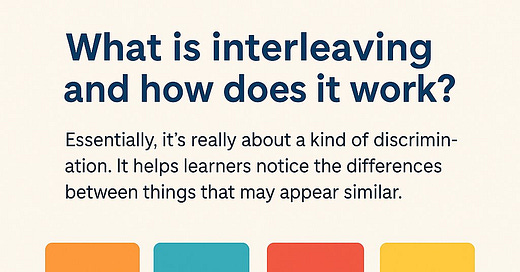


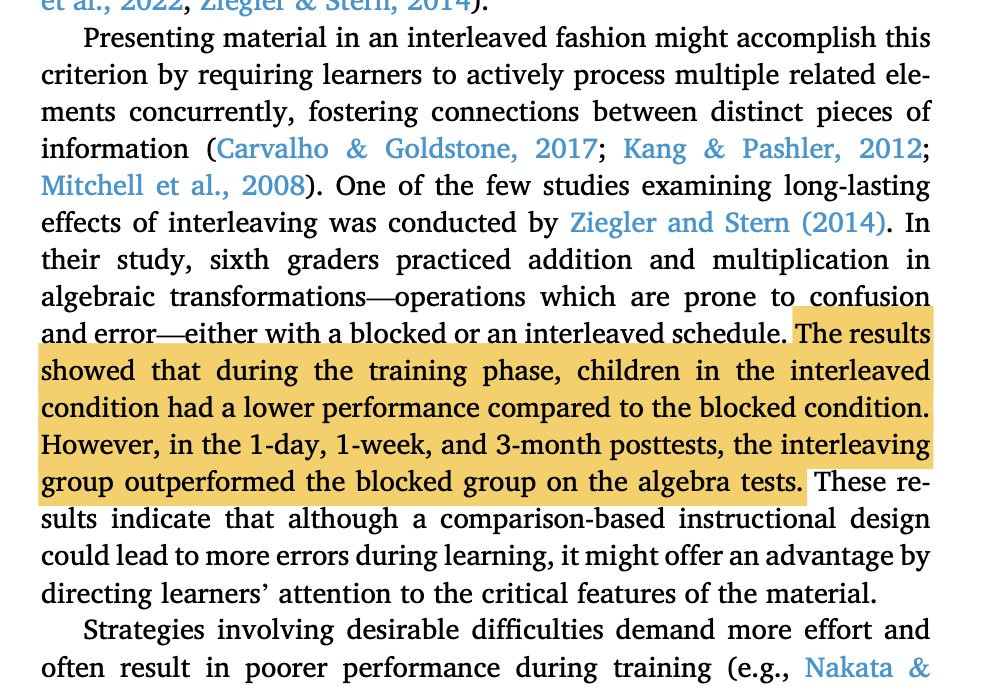

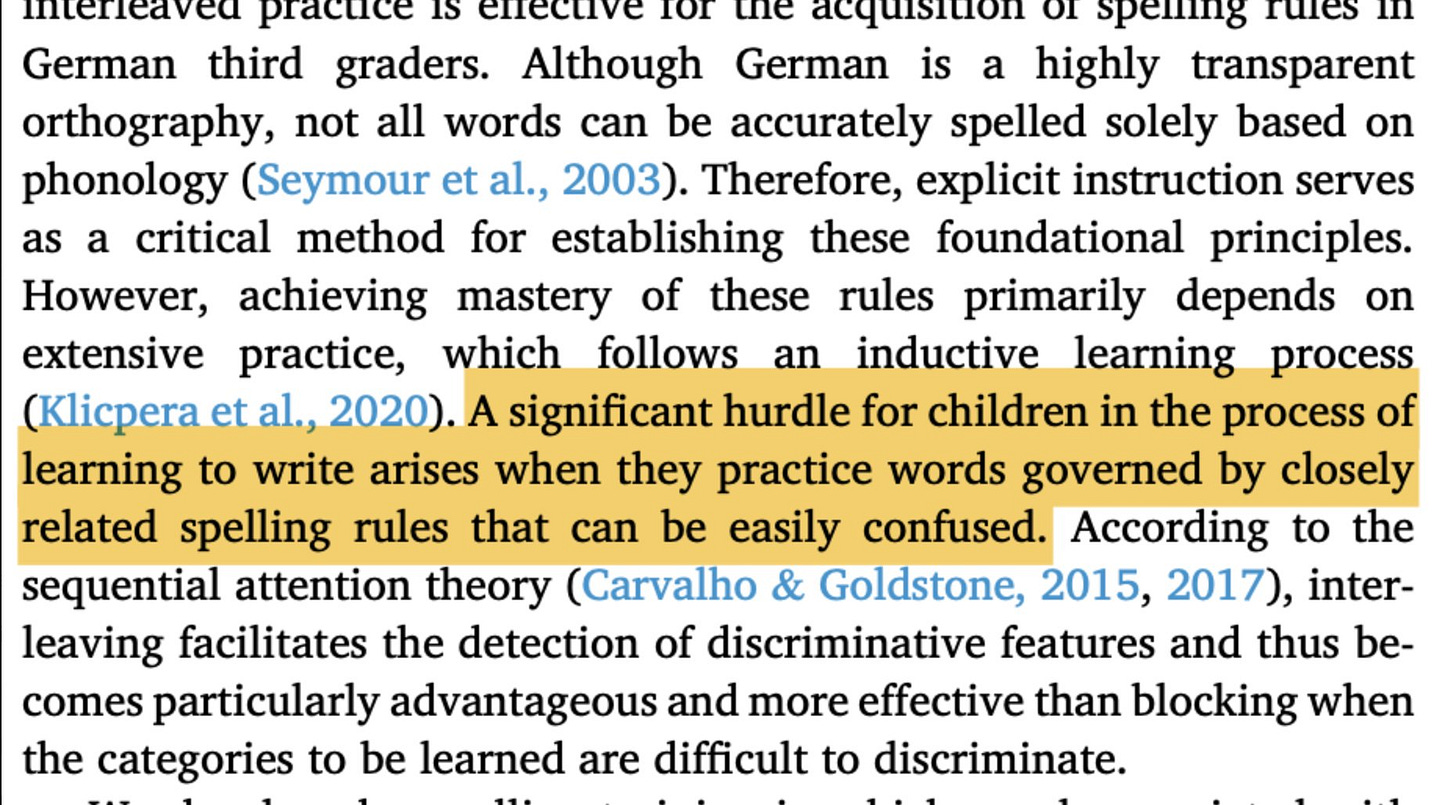
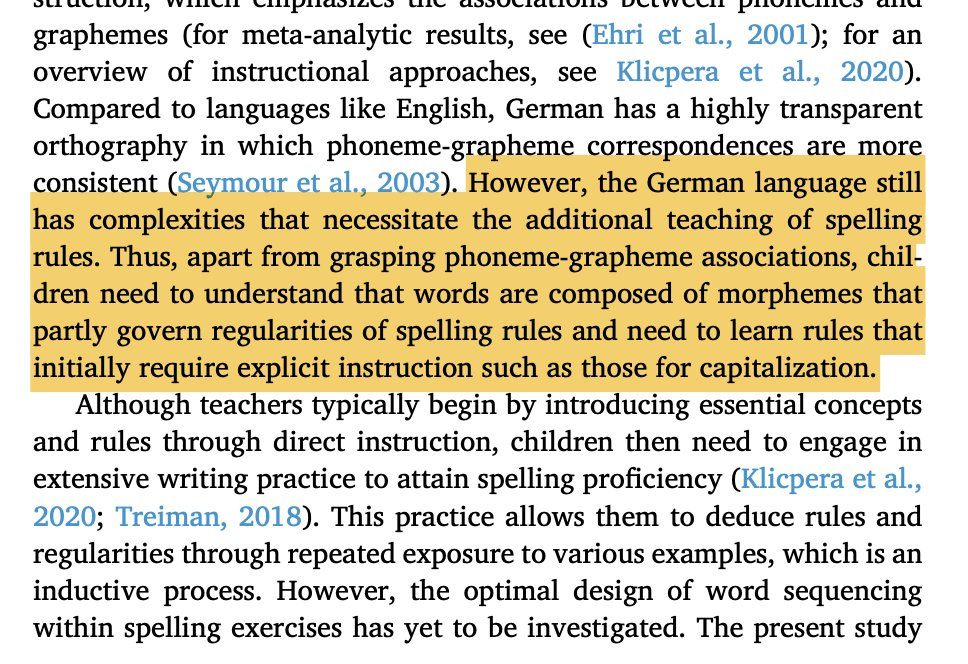
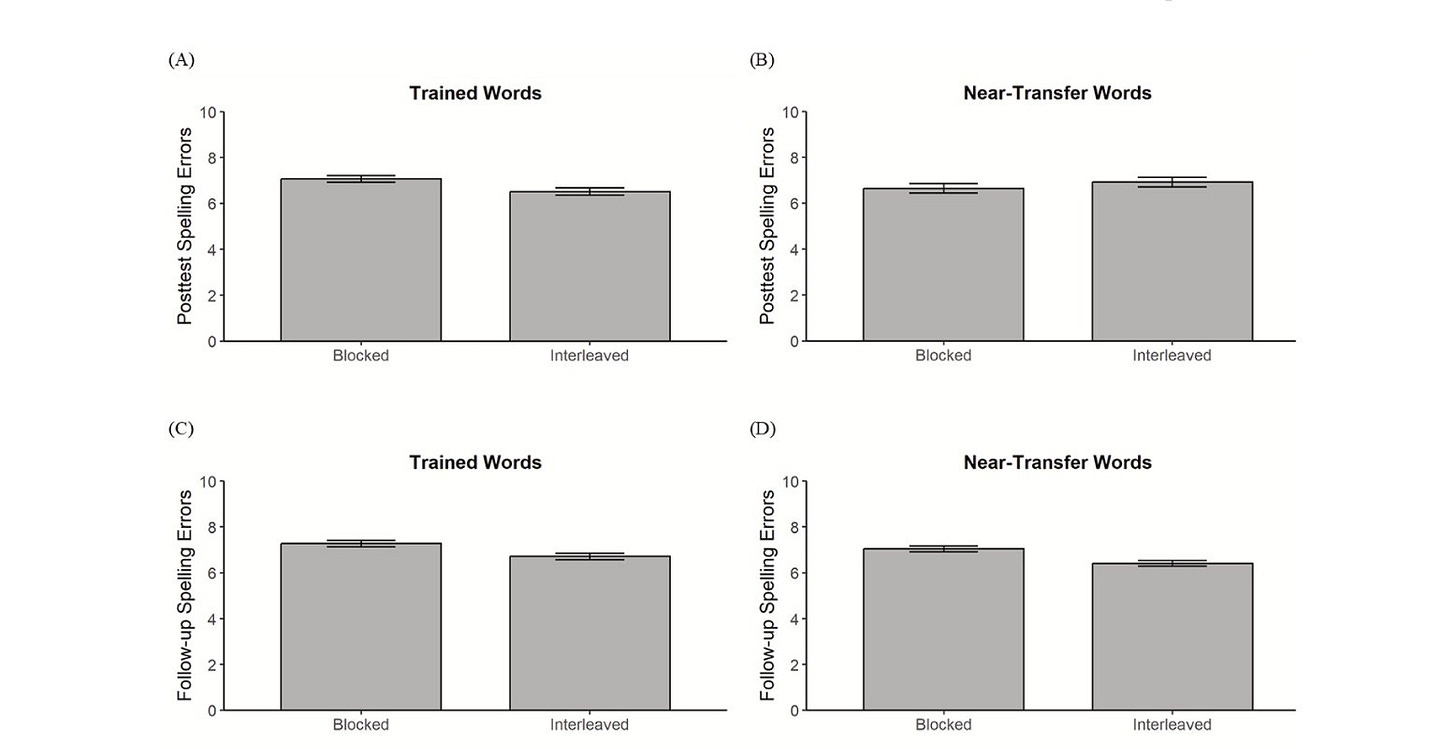

I find the discussion of interleaving research to be thrilling and frustrating at the same time. I’d love to see some more specific examples of effective interleaving by subject to better understand how this works. Do you know of any resources that combine a bunch of examples in different subject?
These types of studies help educators plan for the types of practice they can/should give students across a year. I know these types of studies have helped me support teachers in planning curriculum across the year and letting the learning in one unit find it's way into the next unit.